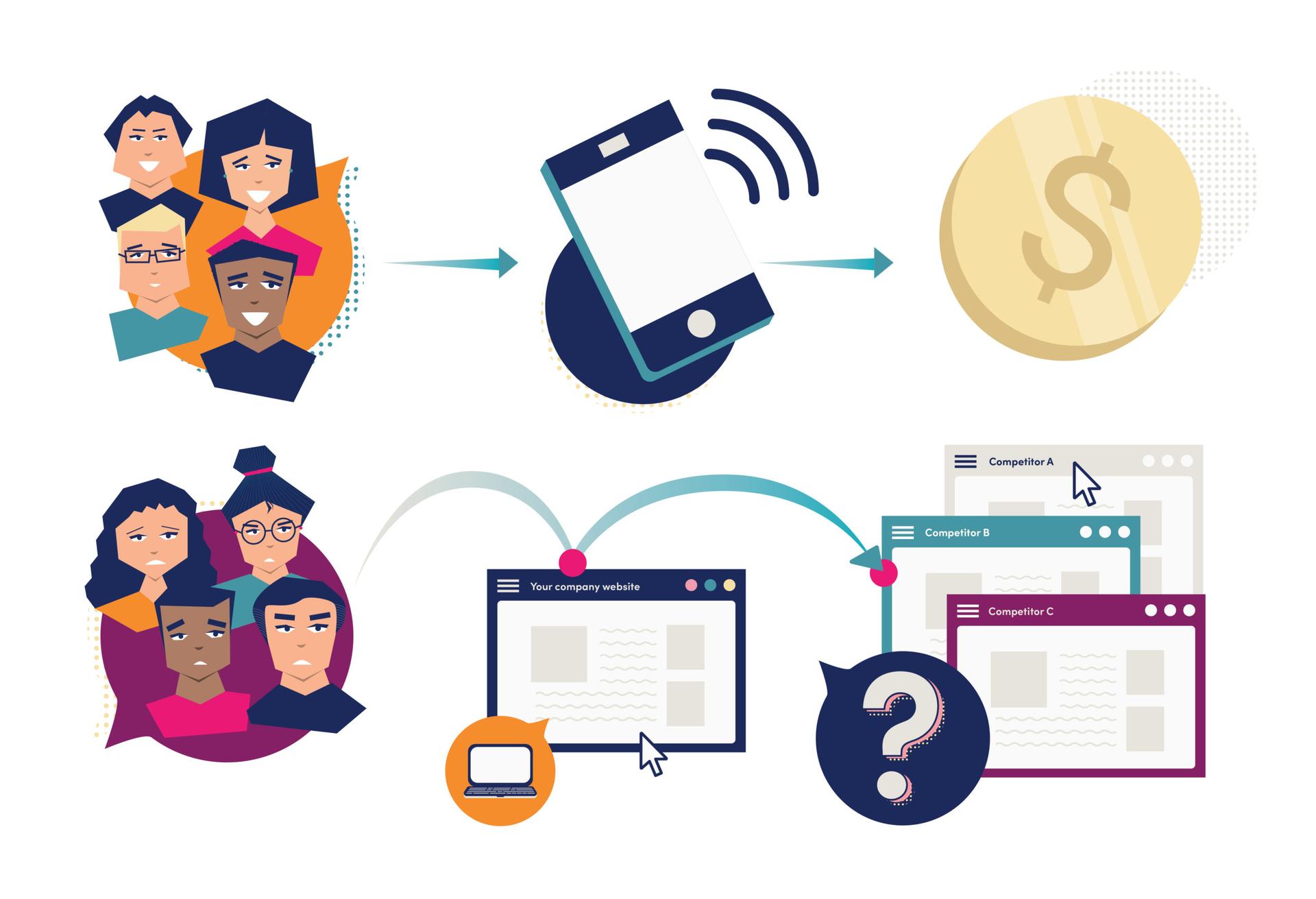Imagine this: a potential customer or client hears about you and wants to do business with you, so they place a call, and…
Ring…
Ring…
Ring…
Imagine this: a potential customer or client hears about you and wants to do business with you, so they place a call, and…
Ring…
Ring…
Ring…
No one picks up.
You don’t want that to happen, and we don’t want that to happen, which is why we at Ruby are dedicated to making sure your calls are answered by friendly, professional human beings.
But calls are just one channel people use to reach out. What about the interactions you can’t hear—the attempts to connect that don’t cause the phone to ring?

Every day, potential customers or clients are visiting your website, seeking solutions to their problems. These people want quick answers, but many would prefer not to pick up and call. Perhaps they’re busy or in an inconvenient location.
Or maybe, like so many of us, they have phone phobia. They’d rather send an email, reach out on social media, or do anything other than—gulp—make a call and speak out loud to another person.
Phone anxiety is more common than you may realize. It’s especially prominent among younger generations, but it can affect anyone. The Conversation reports that “76% of millennials and 40% of baby boomers have anxious thoughts when their phone rings,” and as a result, “61% of millennials would completely avoid calls, compared with 42% of baby boomers.”
What does this mean for your business?
It means that, for as many people who reach out over the phone, there’s a large number who prefer not to call. In most cases, these people are visiting your website (assuming you have a website), and if they don’t see a way to connect with you digitally, they’re moving on.

It’s not only about phone phobia. Technology has raised our expectations as consumers; we expect efficiency, convenience, and quick answers—which conversations over the phone don’t necessarily provide. So, when someone’s only option is to call your business, it’s perhaps no surprise how often they choose to go with a competitor instead.
To be clear, we’re talking about lost opportunities. A lead bouncing from your website is the equivalent of someone hanging up when no one answers the phone.
And it can happen as quickly. Keep in mind that you have five seconds to capture a website visitor’s attention. If that visitor wants to talk to you but there’s no easy easy option for them to do it, well…
What’s the price of those lost opportunities?
Let’s do some quick math.
For simplicity’s sake, let’s say that 60% of your website visitors call your business, and you receive 12 phone calls per day. That means there are another eight customer interactions per day you’re missing out on. Multiply eight by 365, and that’s the equivalent of 2,920 “unanswered calls!”
8 non-callers per day × 365 days per year = 2,920 missed connections annually
Now, consider how many leads you convert into customers, and the value of a new customer or client for your business: How much revenue does a prospect bring?
Again, for the sake of this exercise, we’ll assume you convert 25% of leads, and a typical customer brings in $2,000.
Ready to see what those missed connections cost?
2,920 missed connections at a 25% conversion rate × $2,000 = $1,460,000
That’s right: if you can find a way to connect with interested prospects who don’t call your business, you could gain $1.46 million in revenue every year.
Holy.
Smokes.

Remember: this is very basic math. The numbers are likely quite different for your business. Your opportunity could be smaller—or it could be even greater, particularly if you have recurring revenue, a lot of website visitors, or both.
To figure out what those interactions you can’t hear could mean for your bottom line, take the following steps:
1. Do the (real) math for yourself.
Take a look at your website analytics and determine how many people visit your site every day, week, or month. Then, cross-reference that figure with the number of calls you receive in the same period.
If your website attracts significantly more visitors than calls, it might be a sign that you have the opportunity to bring in serious business online.
2. Optimize your online presence.
However your website currently performs, you only stand to gain from improving it. By making your online presence more responsive, user-friendly, information-rich, and search engine-optimized, you’ll bring in more eyeballs and more business.
Not sure where to begin? Get our free guide to optimizing your online presence.
3. Add chat to your website.
If unattended website visitors are like callers who don’t get through, adding chat is the equivalent of picking up the phone.
When you use Ruby, you can ensure your website visitors are greeted by a friendly, live chat specialist, 24/7. Our chat specialists are experts in creating meaningful connections and converting visitors into customers or clients.
Discover how Ruby’s live online chat has transformed real businesses. Read a customer story.



